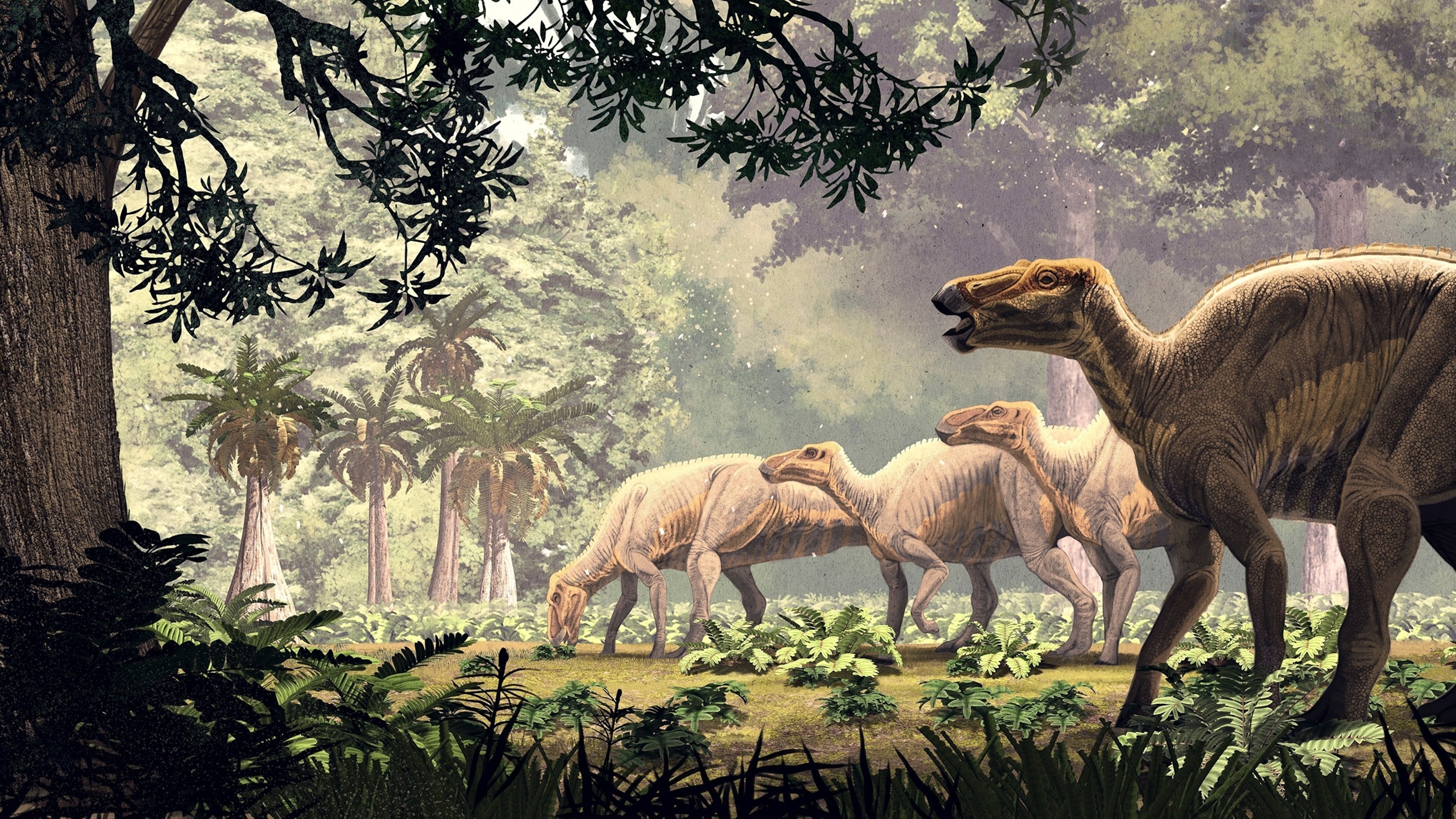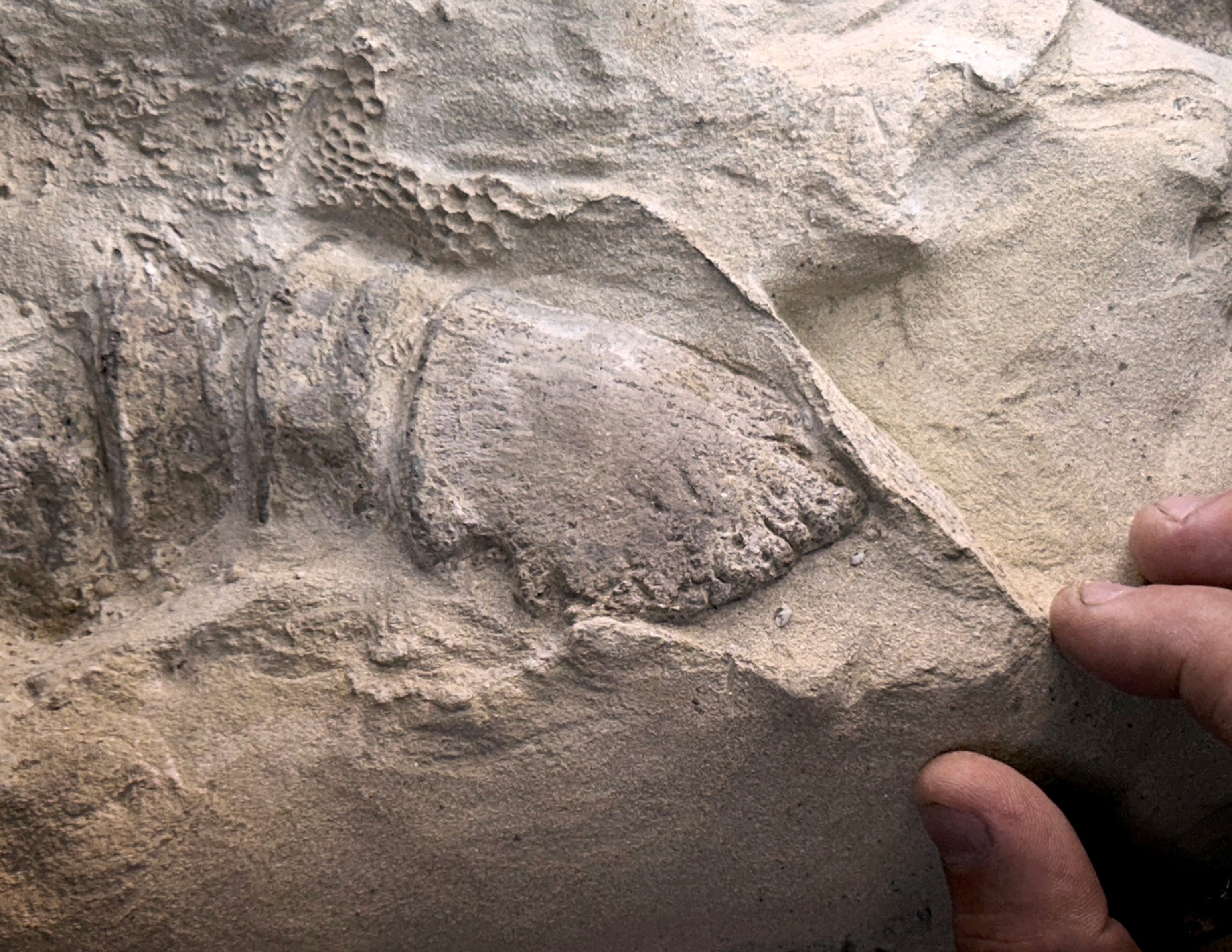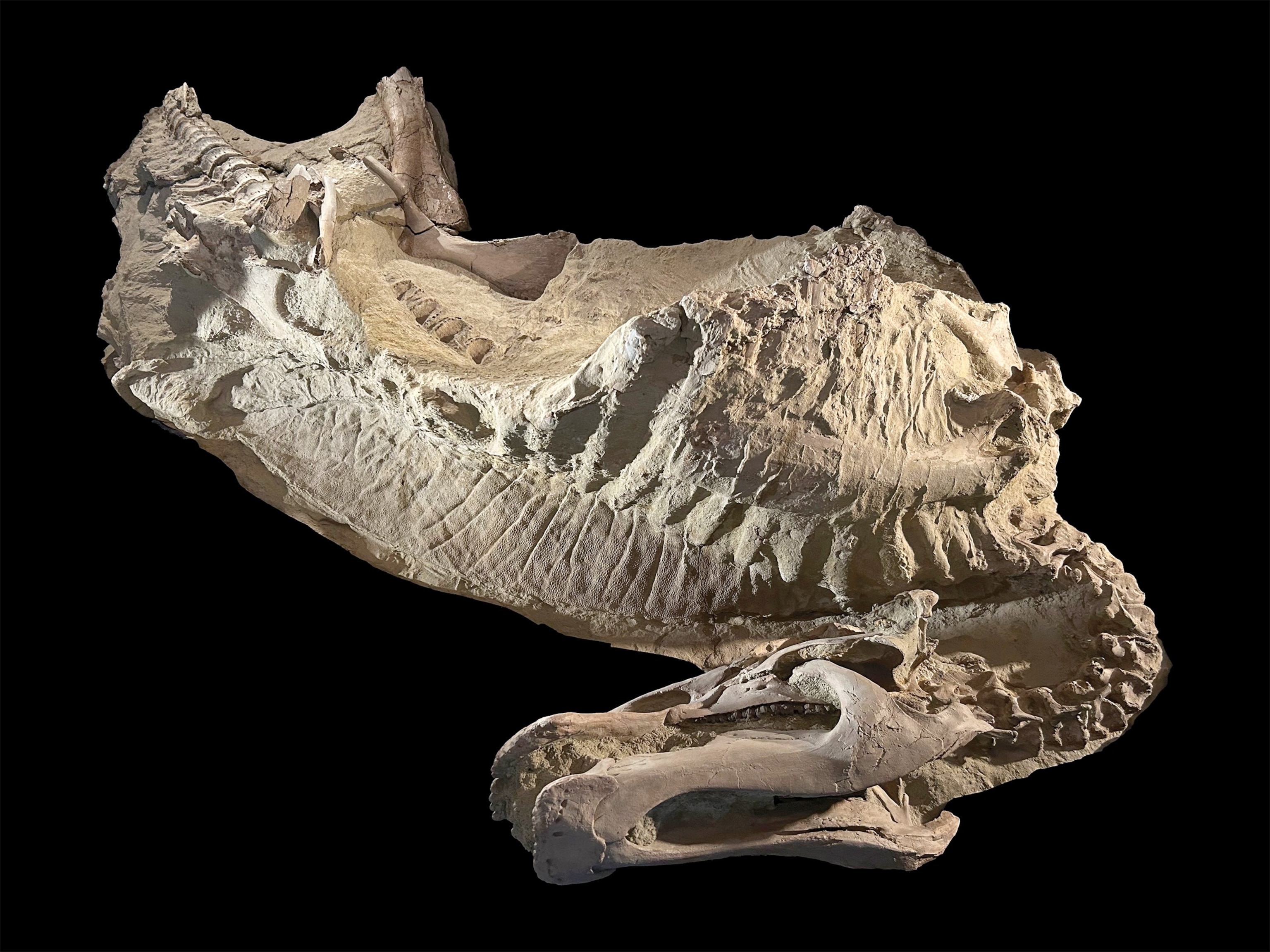Paleontologists were able to recreate the dinosaur’s appearance in great detail.
October 27, 2025, 5:29 PM
Skeletons of duck-billed dinosaurs found more than 100 years ago are so well-preserved that they contain fleshy body parts of the extinct species embedded in thin layers of clay, scientists say.
Specimens of Edmontosaurus annectens, known for their long skull that resembles a duck’s bill, were found in eastern Wyoming in the early 1900s. Recent reexamination of those fossils by paleontologists at the University of Chicago revealed that the fossils do not contain just bones, but mummified body parts protected underneath a clay mask, according to a paper published last week in Science.

Stock photo rendering of Edmontosaurus annectens.
Roman Garcia Mora/stocktrek Imag/Getty Images
Among the bones are «stunningly preserved» pieces of skin, spikes and hooves, the researchers said.
The «fleshy» parts are not fossilized flesh but rather delicate clay molds formed by microbes as the animals decayed, according to the paper.
The uniform clay layers are bound by sandstone, rather than true fossilized soft tissue, likely formed as a surface template over the decaying carcass, aided by biofilms.
This is in contrast to typical soft tissue preservation, which occurs in fine-grained, oxygen-poor environments, such as lagoons or seabeds, and results in the fossilization of delicate parts such as feathers and skin, the researchers said.

The hoof, preserved in section as a very thin clay layer, caps the end toe bone in the foot of an adult mummy of the adult duck-billed dinosaur Edmontosaurus annectens.
Tyler Keillor/Fossil Lab
When the specimens were first discovered in coarse, oxygenated river deposits, scientists assumed they were fossilized skin texture and body parts. But further examination of the original skeletons — as well as the findings of two more mummified E. annectens, a juvenile and an adult — proved otherwise.
Popular Reads
The late juvenile E. annectens is the first subadult dinosaur mummy and the first large-bodied dinosaur with a «fully preserved fleshly outline,» including a neck and trunk crest.
The adult specimen is the first hadrosaurid to retain its full tail spike row. It is also the earliest known tetrapod with hooves, marking the first reptile with hooved feet, according to the paper.

The mummy of a juvenile duck-billed dinosaur Edmontosaurus annectens was preserved as a dried carcass resting on its ribcage about 66 million years ago.
Tyler Keillor/Fossil Lab
The midline crest and tail spikes of E. annectens reveal a «far more complex hide» than historical restorations have suggested, the researchers said.
The species also has functional and morphological similarities to some modern squamates, the largest order of reptiles that contains lizards and snakes.





